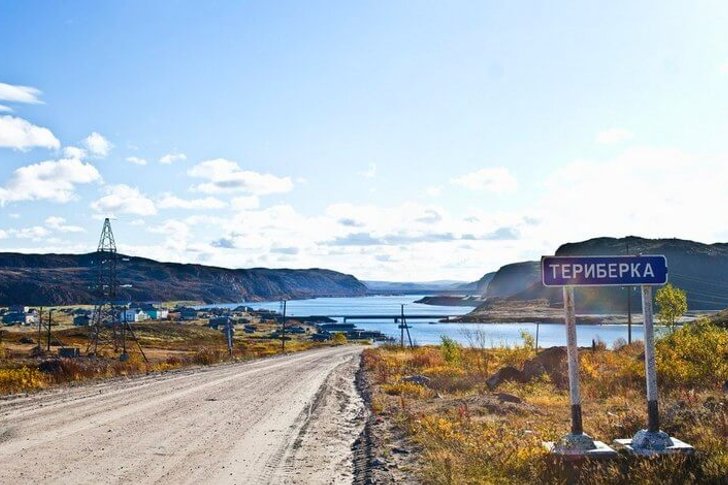The largest city beyond the Arctic Circle, the base of the icebreaker fleet, the hero city, the sea gates of the Arctic. Murmansk was founded only in 1916 and cannot boast of a large number of historical sights. But still, this is an interesting and original region that attracts tourists with the splendor of harsh northern landscapes.
The center of city life is the Five Corners Square. This is a favorite place for walks and holidays among locals. There are many memorials dedicated to military and naval subjects in Murmansk. Numerous museums introduce the history and cultural heritage of the region. You can learn about the flora and fauna of the Arctic by visiting the aquarium, ostrich farm, Lapland Reserve.
And, of course, all travelers dream of seeing one of the most breathtaking natural phenomena - the northern lights.
What to see and where to go in Murmansk?
The most interesting and beautiful places for walking. Photos and a short description.
- Kola Bay
- Memorial Alyosha
- Hotel Arktika
- To sailors who died in peacetime
- Church of the Savior on the Waters
- Nuclear icebreaker Lenin
- Monument Waiting
- Monument to Anatoly Bredov
- Monument to the victims of the intervention
- Murmansk Regional Museum of Local Lore
- Murmansk Regional Art Museum
- Murmansk Regional Drama Theater
- Museum of the History of OAO MMP
- Naval Museum of the Northern Fleet
- Murmansk Oceanarium
- Train Station
- Bridge across the Kola Bay
- Abram Cape
- Waterfall on the river Lavna
- Teriberka
Kola Bay
The bay of the Barents Sea, which extends deep into the mainland, is 57 km long and 1 to 7 km wide. It got its name from the ancient Russian settlement of Kola. On the western steep bank is the port of Polyarny. On the eastern, more gently sloping coast, there are the ports of Murmansk and Severomorsk. Two large rivers flow into the bay - Kola and Tuloma. Thanks to the warm Gulf Stream, the water does not freeze here. In Murmansk, beautiful views of the bay open from the observation platforms at the monuments to Waiting and Alyosha, as well as from Abram Cape.

Memorial "Alyosha"
A majestic memorial dedicated to all the defenders of the Polar Region during the war years was erected in 1974 on one of the highest hills of Murmansk - Cape Verde. The townspeople affectionately call the 35-meter figure of a Soviet soldier with a machine gun behind him Alyosha. At the foot of it, the Eternal Flame burns. Nearby is an alley of hero cities and a granite stele with the names of all military units that defended the Kola Peninsula from German invaders.

Hotel "Arktika"
Located on the central city square. Leads its history since 1933. The current 18-storey building was erected in 1984 and became the tallest on the Kola Peninsula. After reconstruction in 2014, Arktika joined the international hotel chain Azimut Hotels. Today, the hotel and business complex includes a 4-star hotel with 186 rooms, a business center, offices, conference rooms, shops, restaurants, two-level parking, etc.

"To sailors who died in peacetime"
One of the most famous memorials in Murmansk was opened in 2002 on the shores of Lake Semenovskoye. Its central part is an 18-meter lighthouse tower. Inside it is the Hall of Memory, which contains a book with the names of all the sailors who did not return home in peaceful days. The memorial also includes a ship's anchor, a fragment of a log cabin lifted from the Kursk submarine, and an Orthodox church. All parts of the complex are connected by stairs and equipped with viewing platforms.

Church of the Savior on the Waters
It was erected in 2002 with donations from Murmansk residents. It is an integral part of the memorial in honor of the sailors who died in peaceful days. It is a classic one-apse temple in the Old Russian style with a bell tower. The name is associated with the icon of Jesus Christ walking on water. Among other shrines are the icons of the miracle worker Seraphim of Sarov, the holy Matrona of Moscow, the elders of Optina, and the righteous admiral Ushakov. Services with sign language translation are held for deaf parishioners.
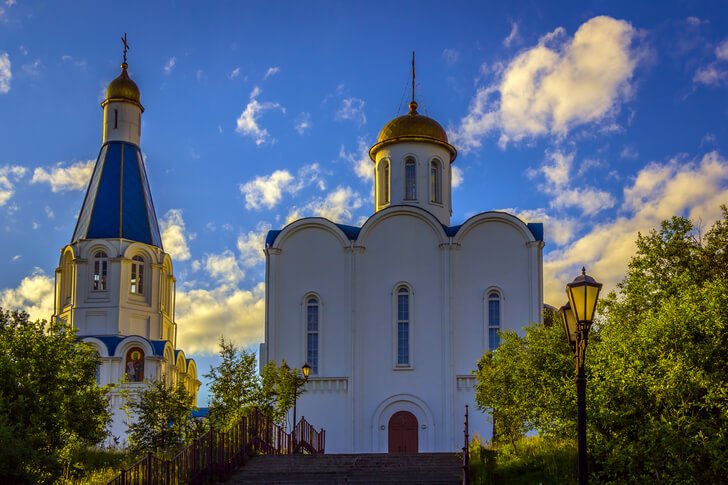
Nuclear icebreaker "Lenin"
The legendary giant ship with a nuclear installation, which has no analogues in the world before, was developed in the USSR in the 50s of the last century. It was used to provide navigation along the Northern Sea Route. Since 1989, the icebreaker, which has served for 30 years, has been permanently moored in the seaport of Murmansk. After renovation work, it was converted into a museum. During the tour you can see the engine room, wardroom, dining room, medical unit and other facilities.

Monument "Waiting"
An eternal symbol of devotion and fidelity to wives and mothers, waiting on the shore for their beloved men from the voyage. He was embodied in the image of a young woman standing on a high pier with a bouquet of flowers and welcoming the long-awaited ship. The monument was created at the expense of the townspeople and was solemnly installed in 2012 on the shore of the Kola Bay. It is clearly visible from the sea. Near the sculpture there is a small square, and an observation deck is also equipped.

Monument to Anatoly Bredov
The sculptural monument to the Hero of the Soviet Union, the brave machine gunner Anatoly Bredov was opened in the center of Murmansk in 1958. In one of the fierce battles during the Great Patriotic War, left without cartridges, a 19-year-old guy blew himself up along with the Germans with the last anti-tank grenade. Residents of Murmansk decided to perpetuate the feat of a brave countryman in bronze. The three-meter sculpture depicts a soldier with a grenade in his hand at the moment of his last step into immortality.
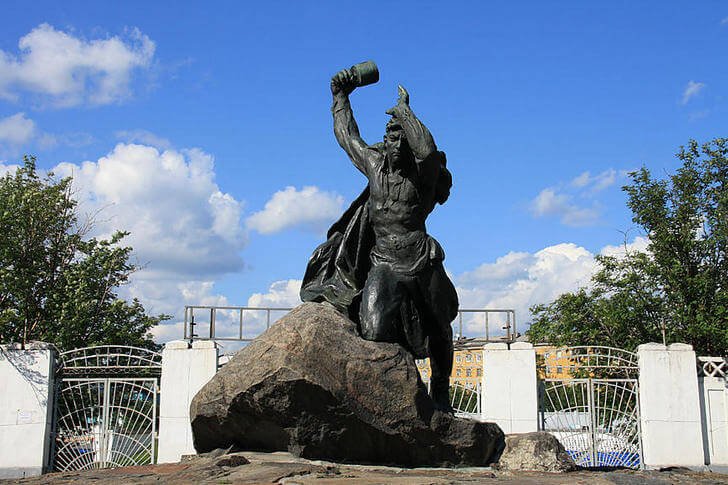
Monument to the victims of the intervention
Located in the central part of the city. It was erected in 1927 at the burial site of prisoners imprisoned by foreign interventionists in 1918-20, as well as fallen participants in the liberation uprising in February 1920. It is a reinforced concrete structure in the form of a two-tier tribune, surrounded by poles and anchor chains. A memorial plaque with a dedication to the victims of the intervention is fixed on a granite block in the center of the memorial.
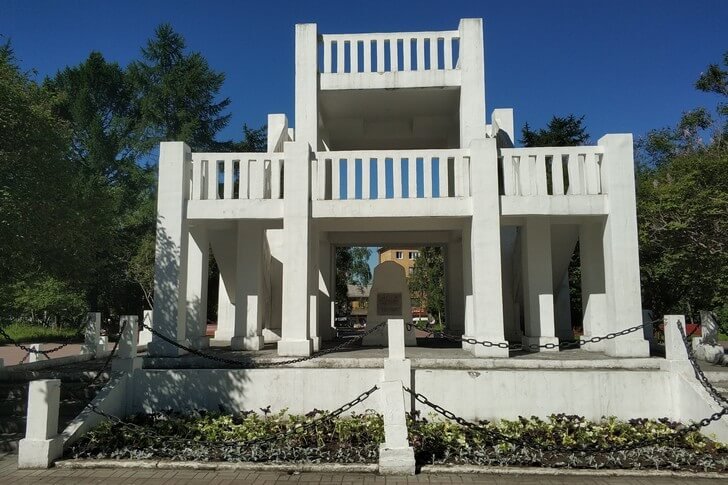
Murmansk Regional Museum of Local Lore
The expositions are located in 17 exhibition halls and tell about the development, important historical milestones, cultural traditions and natural resources of the northern region. The opening of the museum took place in 1926. Among its unique exhibits are a geological collection from the depths of the Kola well, a diorama on the theme of the animal world with imitation of the aurora borealis, household items and interiors of indigenous dwellings, materials on the development of the legendary Northern Sea Route, etc.
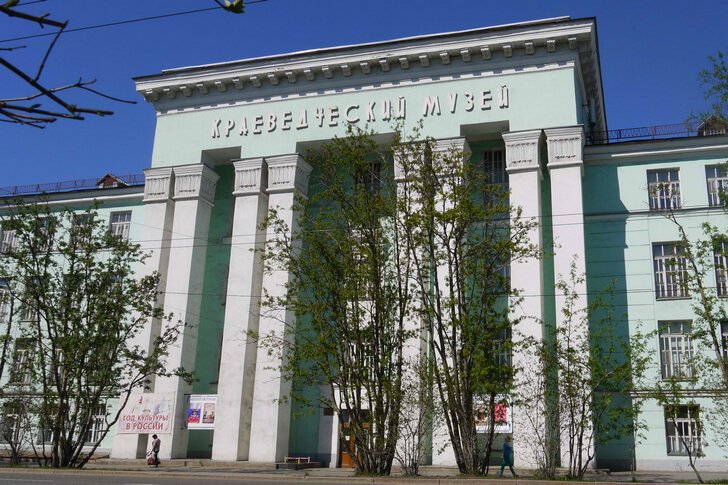
Murmansk Regional Art Museum
Museum collections are stored in one of the oldest buildings in the city, built in 1927. During the war years, the house was badly damaged. Only at the end of the 80s was its restoration completed, and an art gallery, the only one in the Arctic, was located here. Its funds consist of more than 7 thousand exhibits. Extensive collections of graphics, paintings, both past centuries and the present, the works of sculptors and the best examples of folk crafts are presented.
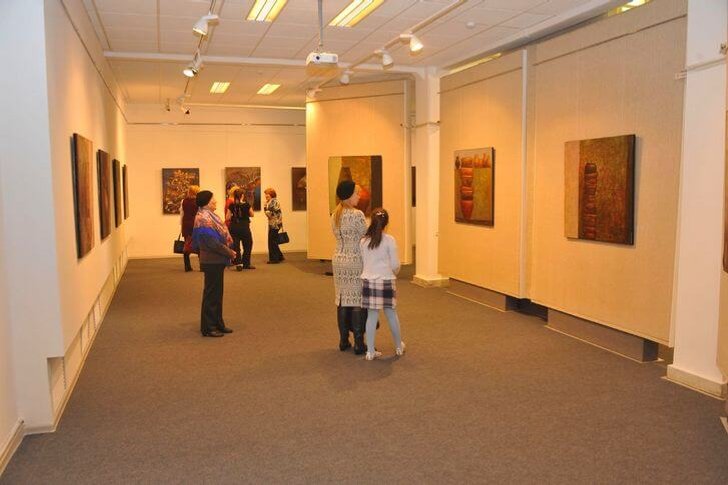
Murmansk Regional Drama Theater
The opening of one of the most popular theaters in Murmansk took place in 1939. For a long time, performances were held on the stage of the city's House of Culture. Since 1963, the theater has acquired its own building, located on Lenin Avenue. His contemporary repertoire consists of adult and children's performances based on classical works, as well as modern dramaturgy. The Murmansk Drama Theater is the initiator of the Polar Star festival.
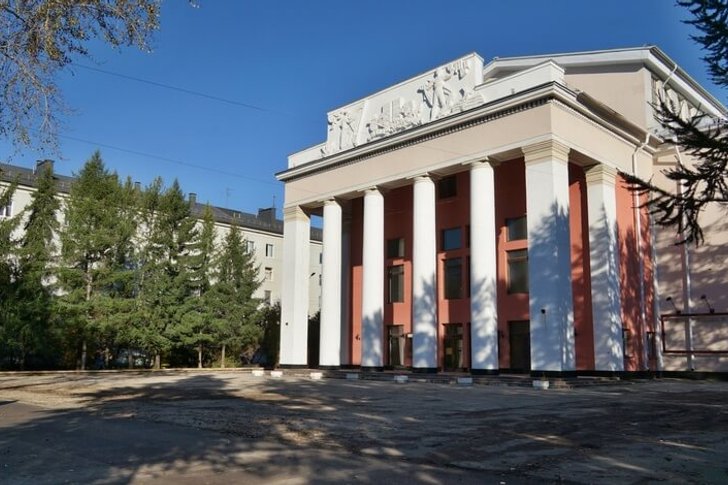
Museum of the History of OAO MMP
The opening of the Maritime Shipping Museum took place in 1977. Its three halls present exhibitions dedicated to the transport and icebreaking fleet, legendary ships and prominent figures of the nuclear fleet, heroic sailors and officers. Of particular interest is a large canvas diorama on the theme of the development of the sea Northern Route. Also among the exhibits are models of ships and a nuclear reactor, ship instruments, portraits of the brave conquerors of the Arctic.

Naval Museum of the Northern Fleet
. The museum funds contain models of various ships, maps, banners, awards, weapons, personal belongings of sailors and officers, photographic documents and works of fine art. In total, 65 thousand valuable exhibits were collected.
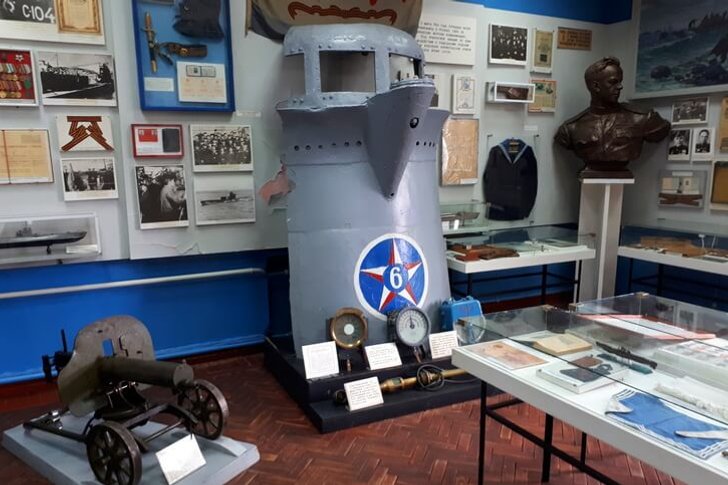
Murmansk Oceanarium
Since 1996, residents and guests of Murmansk have had the opportunity to learn more about the marine life of the Arctic. The building of the oceanarium is located on Semenovskoye Lake. Year-round, 3 times a day, there are performances with the participation of pinnipeds - arctic seals, bearded seals, ringed seals. Also, the center's staff conducts comprehensive studies of mammals, their behavior is studied, and a seal therapy program for sick children has been developed.
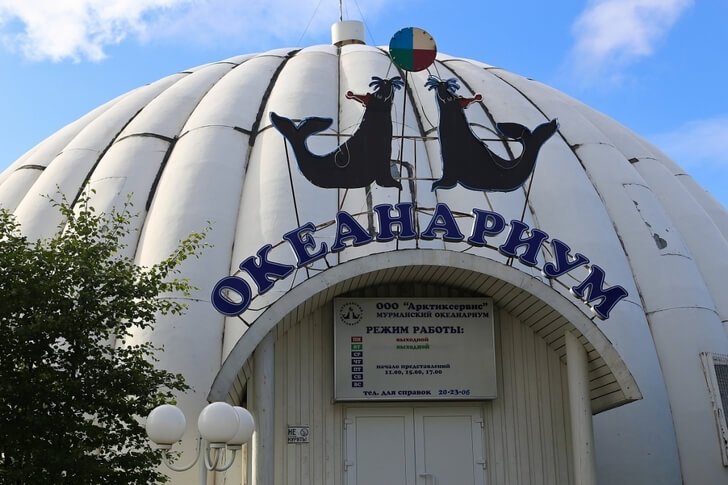
Train Station
The building of the very first station in Murmansk was erected in 1916. Later it was rebuilt twice. In 1923 - after the fire, and in 1954 - after the military devastation. The current two-story light green building is designed in the traditional Soviet style with white columns, a dome in the center and a 15-meter spire crowned with a star. The station contains 4 platforms, numerous crossings, tunnels, 15 railway tracks.
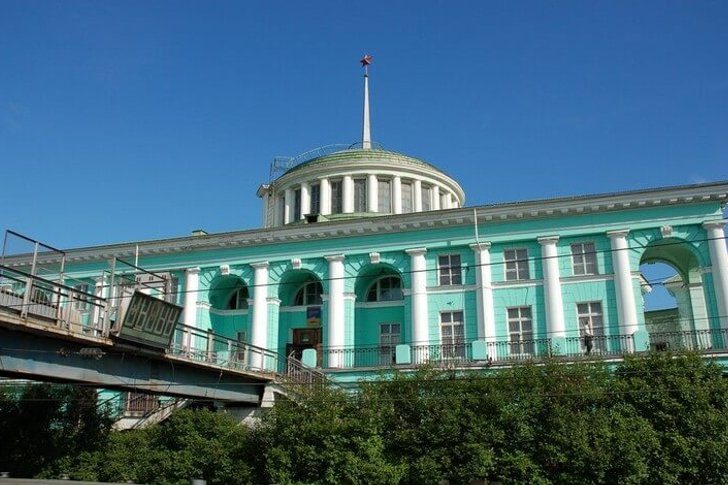
Bridge across the Kola Bay
One of the longest bridges in Russia took more than 10 years to build and was inaugurated in 2005. Connects the regional center with the western regions, as well as neighboring Norway and Finland. Length - 2.5 km, there are 4 car lanes. It serves as a venue for the annual sports festival called "Murmansk Mile". Within its framework, competitions in athletics, aircraft modeling, volleyball, sailing regatta and other sports are held.
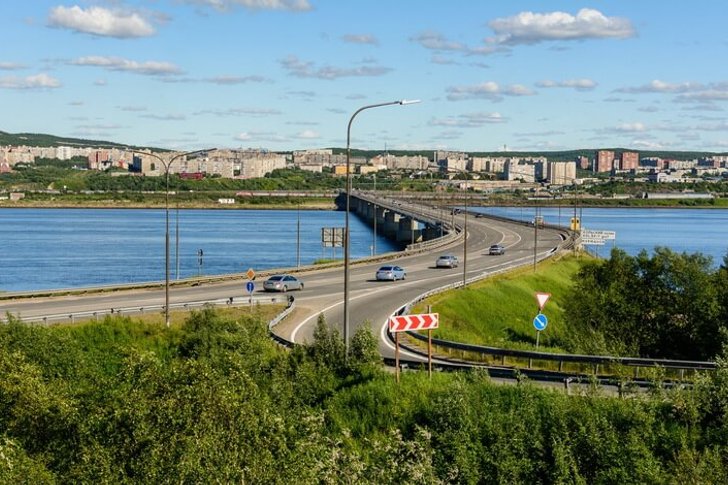
Abram Cape
The cape is located on the western coast of the Kola Bay, opposite the central part of the city. During the war years, air defense units were located here, defending the bay and important city facilities. In memory of those events, a memorial complex was created - anti-aircraft guns, fighters, commemorative plaques. There is also an observation deck with excellent views of the bay, the seaport and all the main attractions of Murmansk. The microdistrict of the same name is located on the slopes.

Waterfall on the river Lavna
The small rapids river Lavna carries its waters from Lake Lovno to the Kola Bay. The waterfall on it is small, 4-5 m in height, but very full-flowing and picturesque, especially in spring. The water rolls down the rocky ledges with a roar, seething and foaming. An exciting spectacle. It is located 20 km from Murmansk, in the vicinity of the village of Abram-Mys. A popular holiday destination for locals. There are a lot of fish in the river - trout, burbot, trout, pike.

Teriberka
A small village 130 km from Murmansk, the "end of the earth" on the coast of the Barents Sea. It was once famous for its ship repair workshops, fisheries, and dairy farms. Today, complete devastation reigns here - rotten boats, rusted skeletons of ships, abandoned houses, piles of mangled scrap metal. In 2014, Teriberka was known all over the world thanks to the released film Leviathan, it was in this village that its key scenes were filmed.
